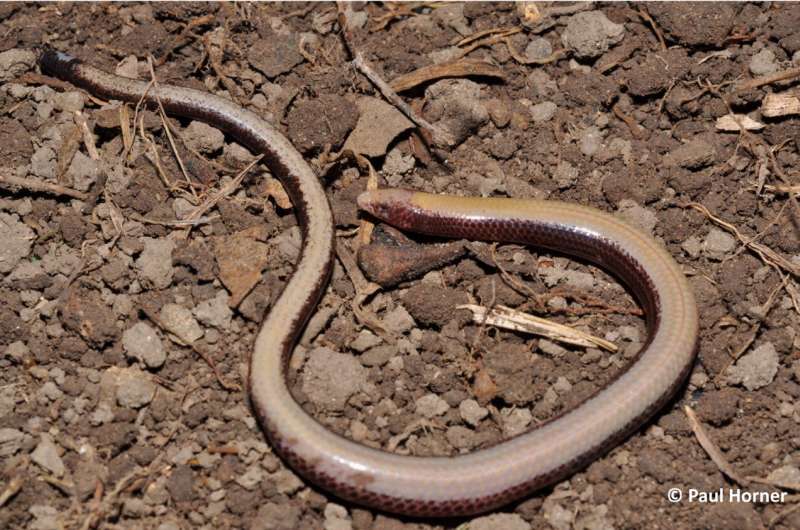Two new species of skinks identified

To coincide with National Reptile Awareness Day today Thursday 21 October, a new paper published in the Journal of Herpetology, led by South Australian Museum Honorary Researcher Dr. Mark Hutchinson in collaboration with Queensland Museum researchers, details the findings of two new species of snake-shaped burrowing skinks each confined to small areas of mid-eastern Queensland.
The work makes use of many of the new tools that researchers can now use to make discoveries in biodiversity. The research group has combined molecular comparisons, micro-CT scanning of skeletons and studies of the external appearance of the two skinks, to get a broad picture of how they vary and to model their evolutionary history.
When asked to explain what makes one of these skinks stand out from others Dr. Mark Hutchinson from the South Australian Museum said:
"One of the species is particularly odd as it has an extra bone in its middle ear. We don't know for sure what it does, but it is evidently connected with modified hearing in some way—probably associated with the fact that while these lizards still have middle ears and a little sound conducting bone, they have lost their eardrum and with that their ability to hear high frequency sounds. This little extra bonelet may improve low frequency sound transmission."
When asked why it is important to analyze the appearance of the skinks, Dr. Hutchinson went on to explain:
"Leglessness and a snake-like body have evolved multiple times in lizards, most spectacularly in snakes themselves, which really are a group of highly specialized legless lizards. By looking at independent cases of leglessness we can look at the common features of the ecological factors that promote it, and the anatomical and developmental changes that make it happen. Every new discovery allows us to test ideas that have already been proposed, and to discover new twists and turns."
"The two new species are quite rare and only occur in limited areas and have managed to go completely unnoticed until now." Dr. Hutchinson said.
The Queensland Museum only has three specimens of one and six of the other in its herpetology collection.
"This is an indication of hidden lives led by these small, (12 cm total length) slender lizards," Dr. Hutchinson added.
"By using this technology, we can analyze all the different aspects of the new species in an integrated way. The very small number of specimens is a concerning indicator that they are probably limited to just a few places which is why this research is so important. We can only start protecting them if we know they are there."
More information: Mark N. Hutchinson et al, Diversity and Systematics of Limbless Skinks (Anomalopus) from Eastern Australia and the Skeletal Changes that Accompany the Substrate Swimming Body Form, Journal of Herpetology (2021). DOI: 10.1670/20-137
Journal information: Journal of Herpetology
Provided by South Australian Museum



















